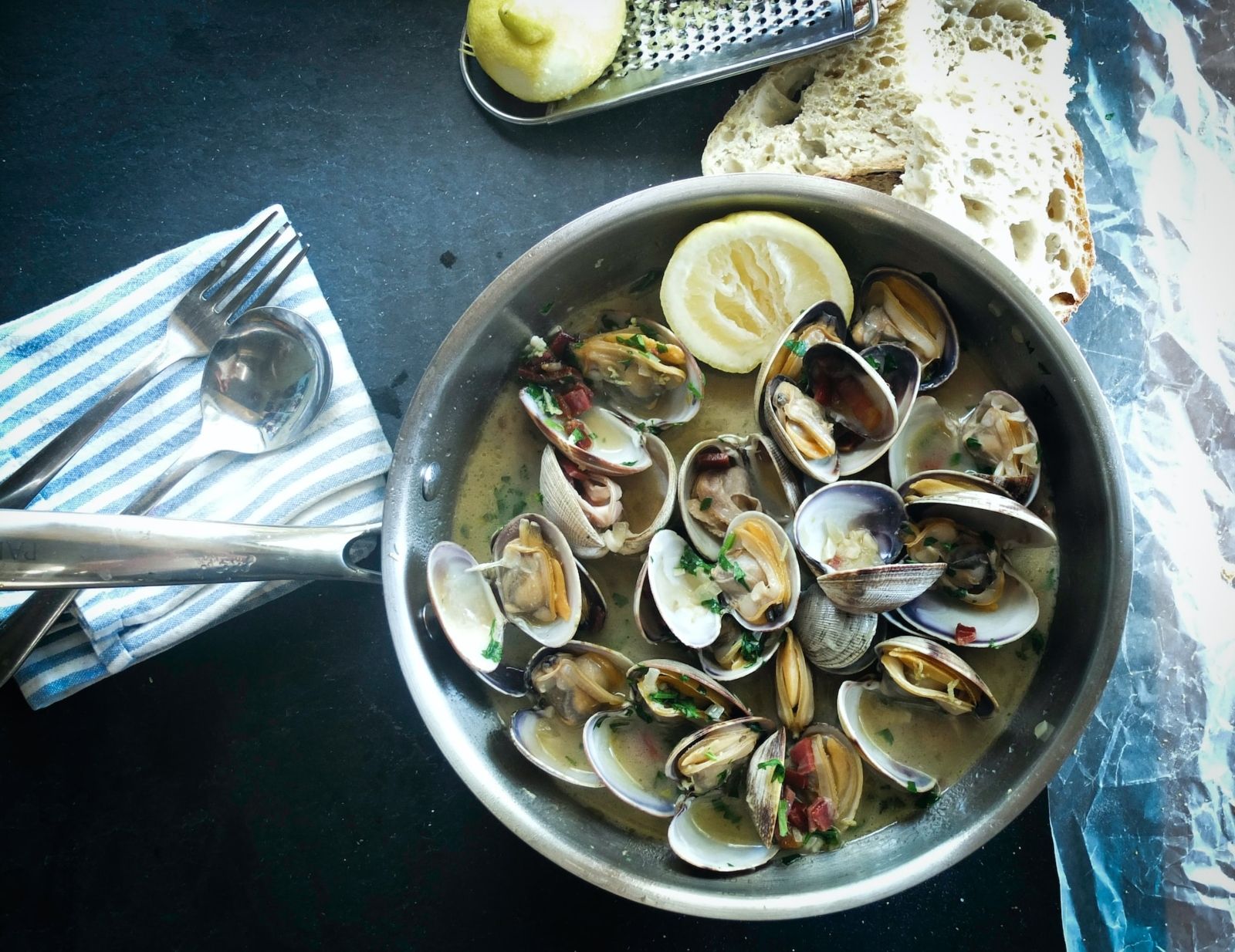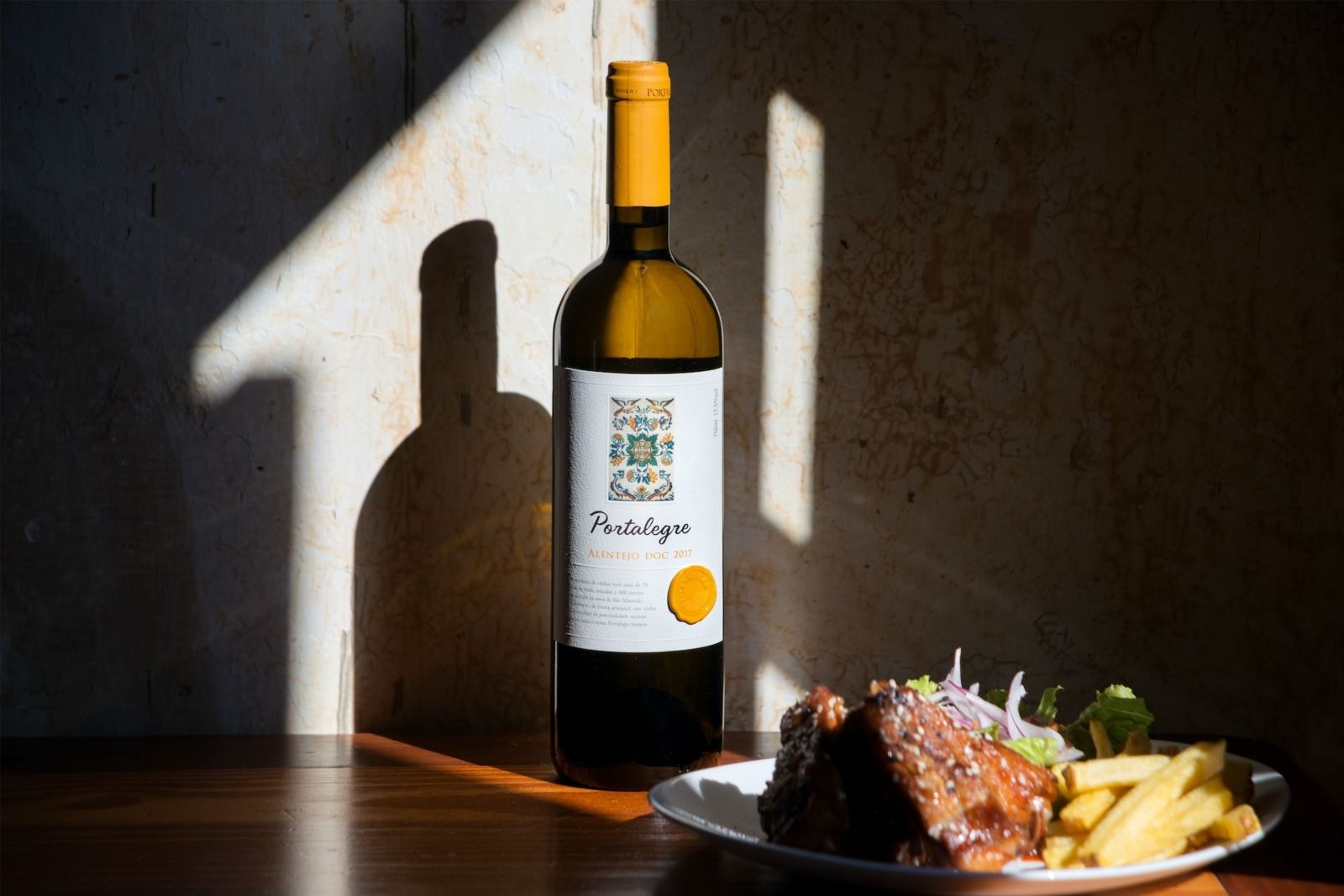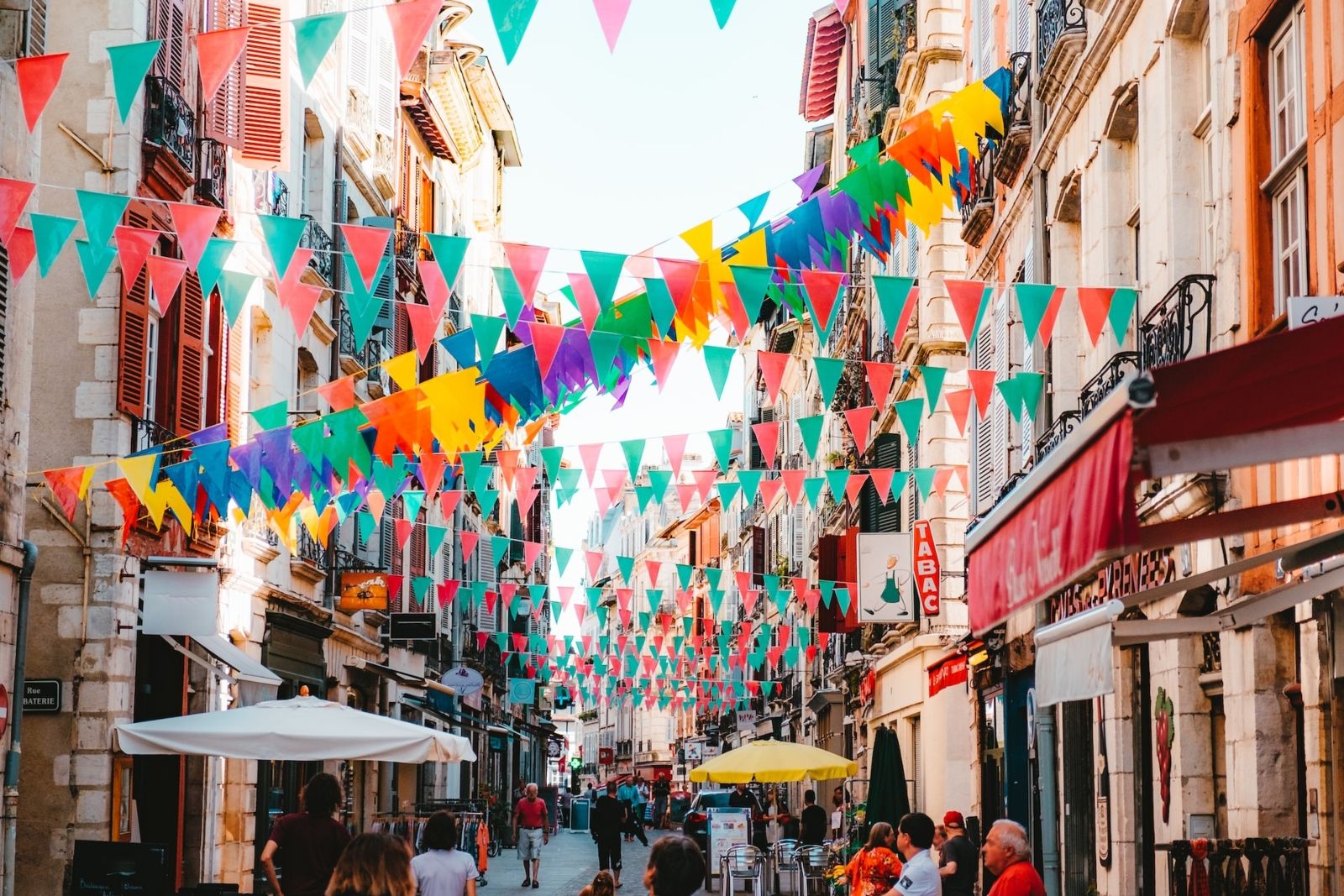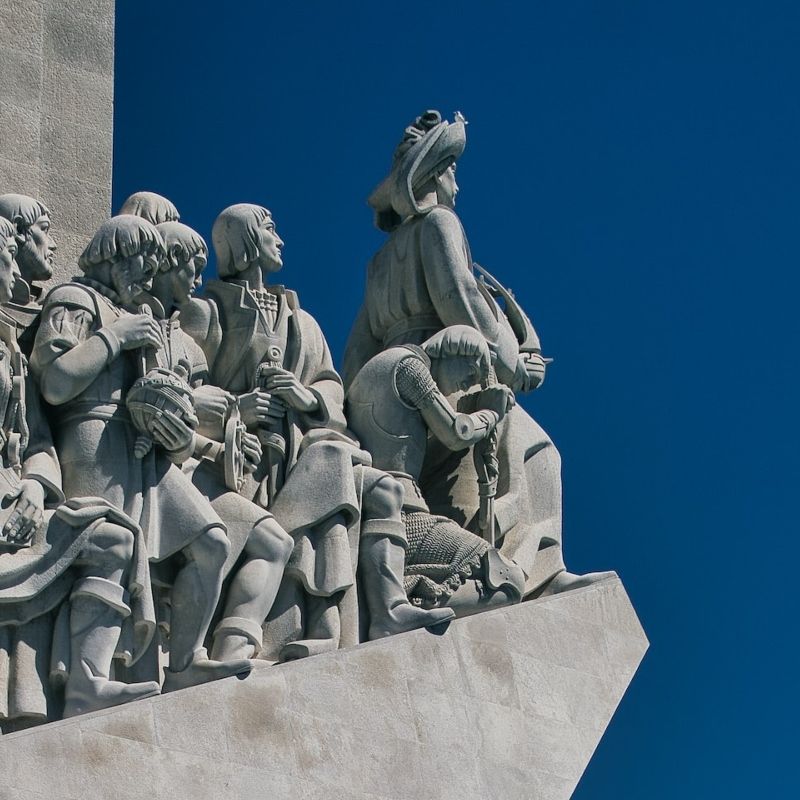Portuguese Culture And Traditions
Portugal's History
The Portuguese are a diverse and multicultural people, as evidenced by their language, architecture, cuisine, and traditions. The origins of the Portuguese people can be traced back to prehistoric times.
BC
In the Neolithic period (c. 6000–4000 BC), a group of hunter-gatherers from the east migrated across the Pyrenees into Portugal. These early settlers were followed by waves of Celts from central Europe in the first millennium BC, who slowly blended with the original inhabitants and adopted their language and culture.
By the time of the Roman conquest in 218 BC, Portugal was already settled by several peoples including Lusitanians, Celtici, Gallaeci, and Cynetes. During this period, Rome introduced local laws and customs which would become part of Portuguese traditions - Roman foodstuffs such as olives, figs, grapes, and grains were adopted while wine was introduced to Portugal for the first time.
AD
The Visigoths also left their mark on Portuguese culture during their occupation of most of the Iberian Peninsula after 585 AD. They brought with them a new religion: Arianism which was eventually replaced by the Catholic Church (Christianity) during the 8th-century reign of King Afonso I who declared Catholicism as the official state religion in 1179. This new faith heavily influenced much of Portugal's social structure and way of life - it resulted in the building of churches throughout rural areas to bring Christianity to those living outside urban centers.
In 711 AD Islamic forces crossed over from North Africa bringing further cultural influences to Portugal - particularly through art, science, and technology where advances made elsewhere in Muslim Spain were brought over to Iberia’s westernmost corner via trade routes along which goods like paper, silk, and spices traveled from Egypt to Morocco then up into Lisbon.
After gaining independence from Castile in 1640 under King John IV, Portugal went on to establish one of Europe’s strongest colonial empires during the 17th-18th centuries that stretched out across four continents: South America (Brazil), Africa (Angola & Mozambique), Asia (Goa & Macau) and Oceania (East Timor). These former colonies contributed not only material wealth but also ancestral heritage - Brazil being home to more than 10 million people with Portuguese ancestry today!
Today
Portuguese history has thus been shaped by global trading networks that have enabled its people to come into contact with cultures far beyond its borders; consequently, this has resulted in a unique mix containing contributions from native Iberian tribes all the way through Islam & Visigothic influence up until modern day colonialism & immigration. This amalgamation can be seen everywhere within today’s Portuguese society - whether it be through music festivals celebrating traditional African rhythms or dishes combining native ingredients with those acquired abroad at an overseas port.
Language
The Portuguese language is an Ibero Romance language that is the official language of several countries, including Portugal and Brazil. It is also the sixth most spoken language in the world with over 250 million native speakers worldwide, making it one of the world’s major languages.
Originally derived from Vulgar Latin, the Portuguese language was first introduced to Portugal during its conquest by Rome in 218 BC. Under Roman rule, Latin became the lingua franca of Iberia and continued to be spoken until well into the Middle Ages when it began to evolve into various dialects such as Galician-Portuguese and Castilian Spanish. As time went by and the country grew more isolated from continental Europe, Portuguese began to develop its own unique characteristics that set it apart from other Romance languages.
Today, Portuguese has two main variants: European Portuguese which is spoken in Portugal; And Brazilian Portuguese which is spoken in Brazil. Despite having many similarities between them – both variants are mutually intelligible – there are some important differences that set them apart. For instance, Brazilian Portuguese often has a different vocabulary and grammar than European Portuguese and also has developed some new speech forms such as informal terms of address or slang expressions.
Brazilian Portuguese is one of the world’s most widely spoken languages, with over 250 million native speakers worldwide. It is the official language of Brazil, and it is also a popular choice for second-language learners. This widespread use can be attributed to the many historical and economic factors that have made Brazil a major global player.
In addition to these two main variants, there are also several varieties of Portuguese that are spoken outside Brazil or Portugal such as Angolan, Cape Verdean, or Mozambique Creole which can have their own particularities depending on their respective contexts.
As a result of globalization and increased immigration from countries where Portuguese is spoken, the number of people speaking this language abroad also continues to grow exponentially across various nations such as France, Spain, and the United States. This ever-growing presence highlights how important this language has become within today's globalized society not only because of its commercial importance but also due to its cultural contributions that connect people around the world through shared values or experiences.
Architecture
Portuguese architecture has been shaped by a variety of influences, ranging from the Ancient Roman occupation to the Age of Discovery and beyond. Throughout time, Portugal has managed to retain some of its unique architectural features while also incorporating elements from other cultures. This is especially true in the cities and towns that were once part of Portugal's extensive empire.

The earliest examples of architecture in the country can be seen in ancient megalithic sites such as Alto da Vila in Odemira which date back to at least 4500 BC. In addition, there are various monuments and architectures dating back to the Roman period, especially in Lisbon which was once a major Roman settlement. Examples include the Aqueduct of Valongo, the Temple of Augustus, and several columns and arches scattered throughout Lisbon's city center.
In the Middle Ages, Portugal began to develop its own distinct style with elements borrowed from Gothic and Romanesque styles. The most notable example is the Monastery of Alcobaça which was built between 1178–1252 under orders from King Afonso Henriques. This monastery was an incredibly influential architectural site for centuries after it was constructed due to its use as a model for other monasteries across the country during this period.
The Age of Discovery opened up new possibilities for Portugal's architecture as more European styles were introduced during this time through contact with African nations such as Angola and Mozambique. One example is Pomarada de São Julião da Barra Palace which was designed by Italian architect Filippo Terzi Da Bologna in 1543 and combines Renaissance style with Moorish influences.
The Baroque period saw even more innovations as Portugal's architects experimented with Rococo designs or blended Classical motifs with traditional regional ornamentation such as azulejos (ceramic tilework). Some impressive examples include Mafra National Palace and Queluz National Palace which feature grandiose façades adorned with intricate sculptures and decorations made from marble or bronze.
Modernism eventually took hold in the country during the 20th century when many cities started redeveloping their urban areas according to modernist principles such as functionality or simplicity rather than decoration-heavy aesthetics preferred by earlier architectural movements like Baroque or Neoclassical styles. Two noteworthy architects who made their mark on Portuguese modernism are Pardal Monteiro who designed Lisbon's Monumental Axis (1937–59) or Álvaro Siza Vieira who designed Estádio Municipal de Braga (2003).
Overall, Portuguese traditional architecture is a testament to both its rich cultural heritage while simultaneously being open to embracing foreign influences throughout its long history - making it one of Europe’s most diverse countries when it comes to architectural styles!
Arts
Portugal is widely known for its great dramatic theatre tradition, traditional songs and musical expression, dramatic art, humorous works, and lyrical works too.
The great Fernando Pessoa, one of the main poets and writers of the world, is from Portugal. And the classic book Os Lusíadas, from Luís Vaz de Camões, is also a mark in its culture.
Traditional folk music is one of the most beloved aspects of Portuguese traditions. Fado is a popular style that originated in Lisbon in the 19th century, with themes often revolving around sorrowful tales involving love, loss, and life’s struggles. Popular instruments used in this genre include guitars, accordions, mandolins, and violins. The vibrant folk dance styles are just as important as the music itself – with several regional dances such as the circle dances from Minho or the Virada from Alentejo being very popular among locals.
Cuisine
Portuguese cuisine is an amalgamation of various cultural influences from around the world. It is a flavorful and diverse cuisine that dates back to at least the 8th century when the country was under Moorish rule, which brought with it a variety of spices, herbs, and ingredients from Africa, South Asia, and the Middle East. This makes Portuguese food distinctly different from its neighbors in Spain or France.
The staple ingredients of Portuguese cooking are olive oil, garlic, onions, and tomatoes. These are used to create the foundational flavors of Portuguese tradition. Seafood is also integral to Portuguese cuisine due to its coastal location on the Atlantic Ocean. Popular seafood dishes include bacalhau (salt cod), caldeirada (fish stew), and amêijoas à bulhão pato (clams with garlic-parsley sauce). The Portuguese also love to eat grilled sardines.

Besides seafood, there are also plenty of meat-based dishes that feature pork, chicken, or beef as their main ingredient such as cozido à portuguesa (Portuguese stew), frango assado (roast chicken), or carne de porco à alentejana (pork with clams). There are also several vegetarian options such as feijoada (bean stew) or arroz de cabidela (rice cooked with chicken blood).
Regional specialties vary between each distinct part of Portugal but some popular dishes remain universal across the nation. These include pastel de nata (Portuguese custard tart), sopa da pedra (stone soup), leitão da Bairrada which is a roasted piglet served with potatoes, rice and breadcrumbs. Other classic dishes that can be found throughout the country include caldo verde (kale soup, a very traditional soup), feijão com chouriço (beans with chorizo sausage), and bacalhau com natas (codfish with cream).
In addition to savory dishes, there are also many delicious desserts that make up a major part of Portuguese cuisine. Besides pastéis de nata which is already mentioned above other popular desserts include bolos lêvedos which are small doughnuts cooked over charcoal embers; Lisbon’s traditional rice pudding; Queijadas de Sintra which are cheese tarts made from goat’s milk cheese; the traditional king cake with dry fruits; and ovos moles de Aveiro which are egg yolk sweets usually filled with almond paste or marzipan cream.
Portuguese cuisine is much more than just these few dishes - it's an entire culture revolving around food! From rustic family recipes handed down through generations to modern high-end restaurants serving creative interpretations of classic dishes - Portuguese culinary popular culture has something for everyone!

Also, Portuguese wine has a long and rich story, with some varieties tracing their roots back to the 4th century BC. The climate of Portugal is well-suited for winemaking due to its warm temperatures and abundance of sunshine, resulting in a wide range of distinct wines with different flavors and aromas. Portuguese wine is extremely important for the country's economy and a fundamental part of the culture of the country.
Overview
When it comes to cuisine, Portugal is home to some of the most delicious dishes in Europe. As mentioned before, seafood is especially popular there. Other common staples include olive oil, garlic, onions, and tomatoes - all of which are used in many traditional dishes that are very popular nationwide.
In addition to its food and music, Portugueses also love to celebrate special occasions such as Easter or Christmas with traditional parties known as “festas”. A popular party usually involves singing and dancing (especially Portuguese traditional dance and traditional song) accompanied by plenty of local food and drinks like wine or beer - making them an unforgettable experience for anyone who visits! Festivals dedicated to saints are widely celebrated throughout Portugal - such as those parties dedicated to Santo António, São Pedro, São João, and other "Santos Populares".

Religion has played an integral role in Portuguese traditions since it was first introduced by Roman Catholicism centuries ago. Today over 88% of Portuguese citizens identify themselves as Roman Catholic - although other religions like Protestantism have gained popularity over recent years due to immigration from other countries. Regardless of faith, however, many festivals such as those dedicated to Saint Anthony still retain their religious roots while simultaneously being enjoyed by people from all backgrounds - making them a quintessential part of modern-day Portuguese life!
Portugal is very rich in cultural traditions and customs that have been passed down through generations. From the traditional folk music and dances to the unique cuisine and traditional celebrations, Portugal has something for everyone.
If you have decided that Portugal is the right place for you and your family, speak with an expert who can help you get there!
